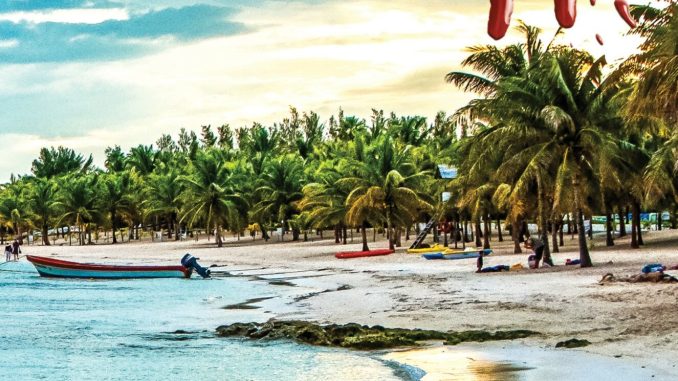
Inspiration may come from anywhere
A specimen he thought might be a human jawbone, found on a beach in North Carolina, was the spark for Paul Mila’s latest fictional effort.
(Spoiler alert: It turned out to be a more prosaic item. But fiction writers don’t have to conform to reality.)
That, and seeing a “Private Property” sign on a stretch of pristine, previously public tropical beach on a Mexican island. Or meeting a retired U.S. Marshal who had been a part of the Witness Protection Program. And knowing a former federal prosecutor who started out as an advisor on the gangster classic Goodfellas, but was invited to play himself because he was out of “central casting.”
From all these elements, Mila crafted Fugitive in Paradise, his sixth novel in the Terry and Joe Manetta thriller series.
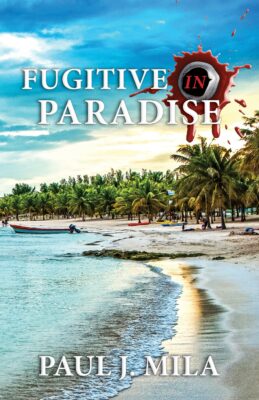
The Carle Place resident has parlayed his knowledge of diving, underwater photography and the island of Cozumel, off the east coast of Mexico, into a series of fiction, non-fiction and children’s books. He exemplifies the old creative writing class maxim, “Write what you know.”
The book concerns a Mafia accountant who steals millions, enters the Witness Protection Program and—chafing at what he and his wife consider a boring anonymous life in Santa Fe, New Mexico—escapes the feds’ embrace. He winds up in Cozumel under a new identity, joining other mobsters in backing a casino development the Manettas are trying to stop.
The locals discover that the resort will destroy a Mayan burial ground as well as a sea turtle nesting area on a stretch of unspoiled beach. Can the heroes stop the ruthless mafiosi and their bought politicians? That’s the crux of the story.
The Manettas are based on actual people Mila knows, and in fact, his books are peopled by characters inspired by his friends. The former prosecutor is Ed McDonald, and in the book his fictional counterpart deals with the wayward mob accountant turned federal witness. Carle Place resident (and the hamlet’s unofficial historian) Bob Greco makes an appearance as well, playing his actual occupation—attorney. Under his real name, no less. Mila asked permission, of course.

And as far as that “jawbone”? Mila first made sure it didn’t come from a human or animal. He sent photos to his dentist, who concluded they were not human teeth holes. Next, he tried a marine biologist and a forensic biologist, who also nixed the idea of a jawbone. The final verdict? It had once been a shell, worked on by borer worms who drilled into it and sucked out the nutrients, leaving indentations that might have passed for teeth holes.
In the novel, the protagonists find a real human jawbone, belonging a Mayan youth killed centuries before. It becomes an integral part of the plot.
Mila spends part of the year on Cozumel and owns a condo on a beach on the western side of the island, facing the Mexican mainland. The presence of the Mayans, he said, has been documented on the isle, only 10 miles across the Gulf of Mexico at its closest.
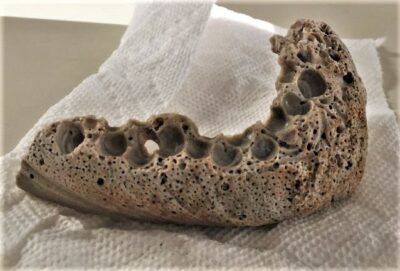
As a youth, he had been fascinated by the famed underwater explorer Jacques Cousteau and his television specials. The Frenchman, in fact, was the first to spotlight the natural treasures of Cozumel, turning it from a sleepy backwater to a tourist resort.
On his diving outings, he said, “You meet the most incredible people.”
One such person was a retired U.S. Marshal, who gave him insights on how protecting federal witnesses worked. More information came from McDonald, a high school classmate who joined the Justice Department Organized Crime Task Force for the Eastern District, which encompasses Long Island. He wound up on Goodfellas, playing himself.
Mila reconnected with McDonald at a St. John’s basketball game where the prosecutor was investigating a point shaving scandal involving Boston College. From both men he learned federal justice procedures and the mechanics of the Witness Protection Program so as to make his scenes believable and technically correct.
Another was Alison Dennis. She had founded a successful diving company in Cozumel and gave him his first lesson when he and wife Carol stayed on a resort on the island at the turn of the millennium.
When it came time to write his first mystery novel Dangerous Waters, Mila decided to base his main character, Terry Manetta, on Dennis. Joe Manetta, in his words, “is loosely based on the culinary exploits of my friend and occasional dive buddy, Joe Troiano…”
Fugitive in Paradise contains a photo section that includes the real life counterparts to the characters as well as the list of Cozumel restaurants named in the story.
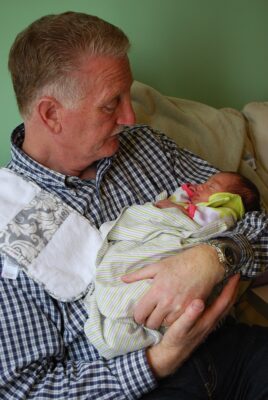
The book is dedicated to the late Fred Chiappetta, who once lived with wife Toni in Dix Hills and Mount Sinai and died last year. Fred’s son Russ married Paul’s daughter Laura. Of his friend, Mila wrote:
We had so much in common that we blended like we were old friends. Both Carol and Toni had been teachers, and Fred and I had worked in business: Fred in brokerage with Paine Webber, and I worked in electronic payments at MasterCard.
Fred was also a great athlete, playing first base at Brooklyn College. He was scouted and invited to a New York Yankees tryout
I asked Fred to read early drafts of my tropical adventure novels, since he had taught marine bio at Xaverian High School in Brooklyn early in his career, which coincidentally was my alma mater. He always provided good suggestions and insights, which improved my stories. I regretted that he didn’t have a chance to read Fugitive In Paradise, which I completed toward the end of his illness.
From Commercial Bank To Sea Bank
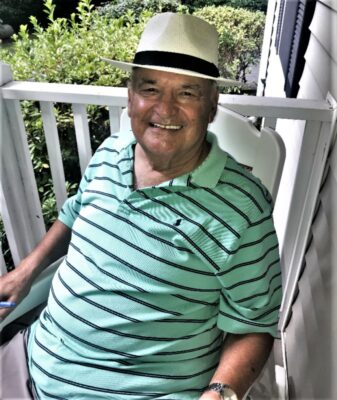
In 2002, months after witnessing the horrific events of September 11 from a skyscraper in Queens, Mila rexamined his life and decided to make the most of his remaining span. He retired to start a second career plying the oceans, championing the causes of the giant sea turtles and the environment. As he likes to joke, he traded his banker’s suit for a wetsuit.
Mila began his writing career with two non-fiction books, Bubbles Up: Adventures in the Planet Ocean, and Basic Underwater Photography. He said he always loved writing and wanted to pen a novel one day.
“The transition from non-fiction to fiction is not an easy one,” he noted. “I found non-fiction to be relatively easy as long as you were writing about a topic in which you were an expert. The challenge was to make it interesting and readable. But fiction writing requires a lot more. You have to worry about character development, pacing, and making sure the story arc makes sense and is interesting. After I finish a novel I feel drained, like my mental plug has been pulled.”
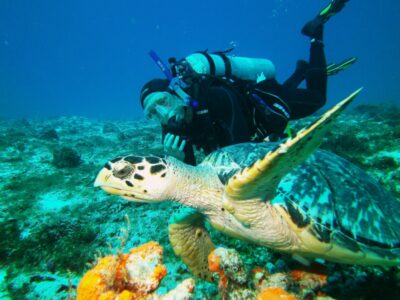
“A fiction book, “ he added, “takes more out of you. You’re using all of your creativity. Once I finish a book I think, ‘That’s probably my last book.’ But then eventually something happened. I get this inspiration from God knows where—it just comes up out of nowhere.”
His own underwater photography provided the illustrations for a series of children’s stories featuring sea turtles.
Nothing has stimulated his imagination for his next Manetta book. Yet. But he has no doubt that something will come up.
For more information visit www.milabooks.com. For a previous story about Mila, click here.


